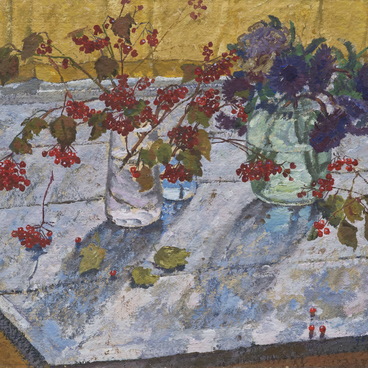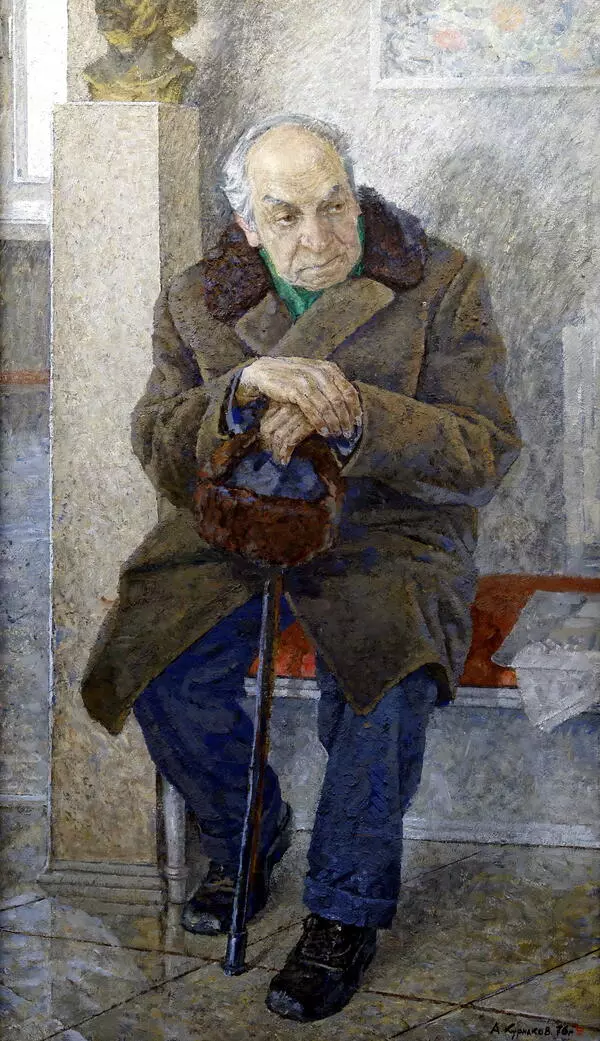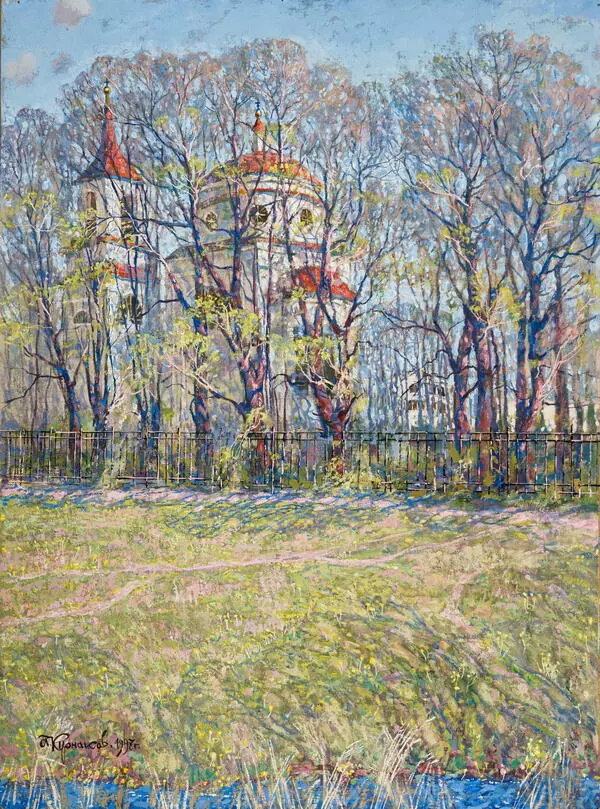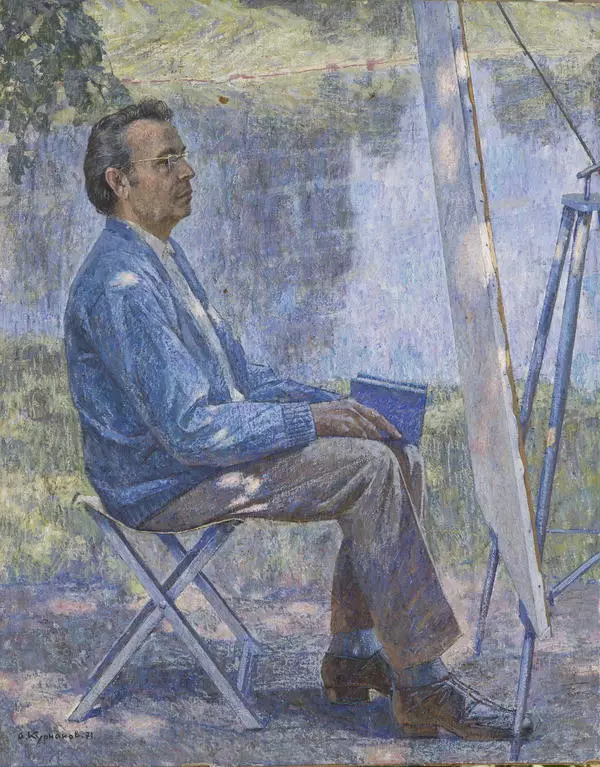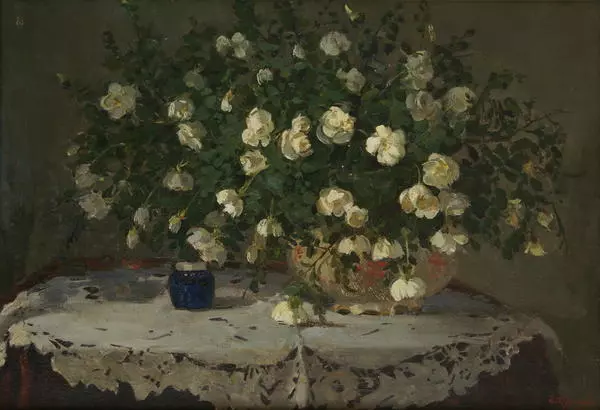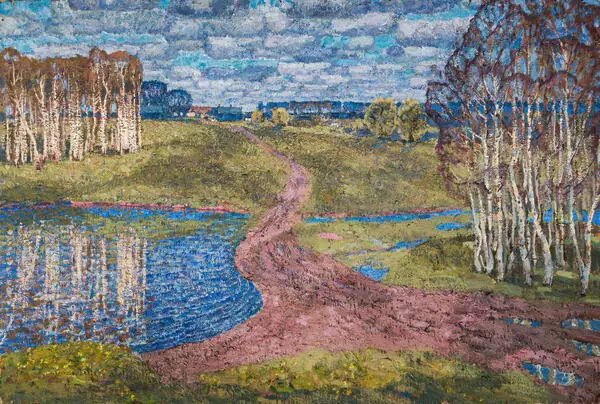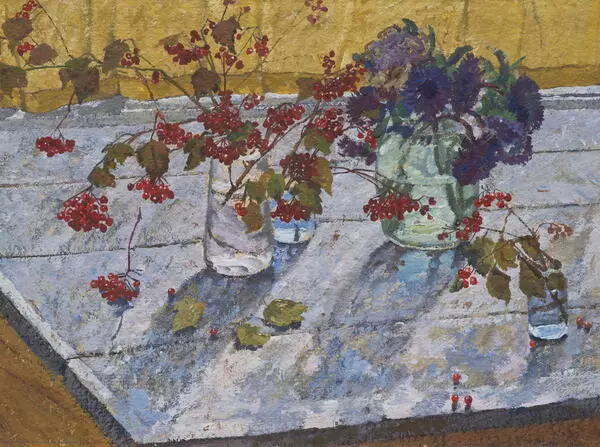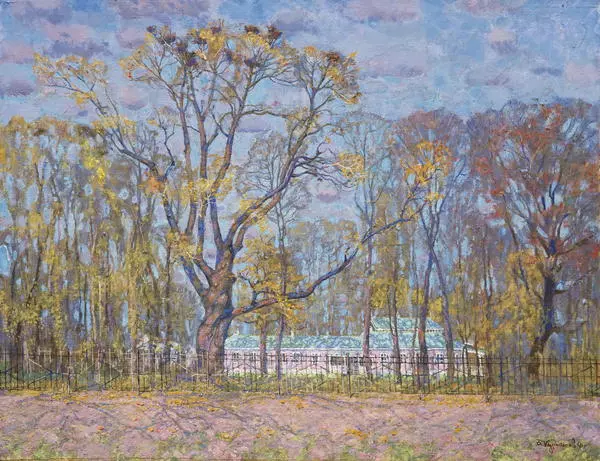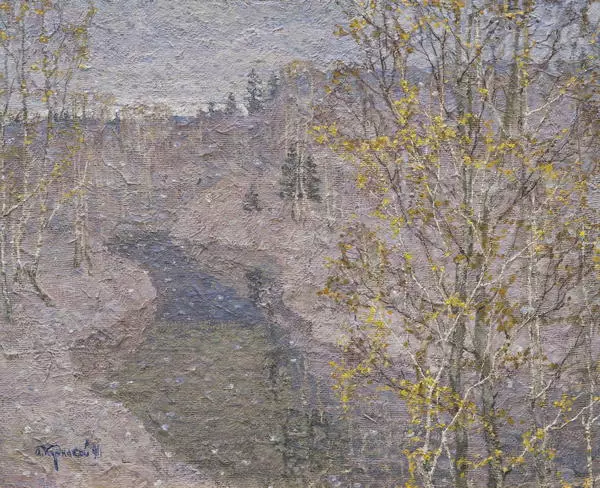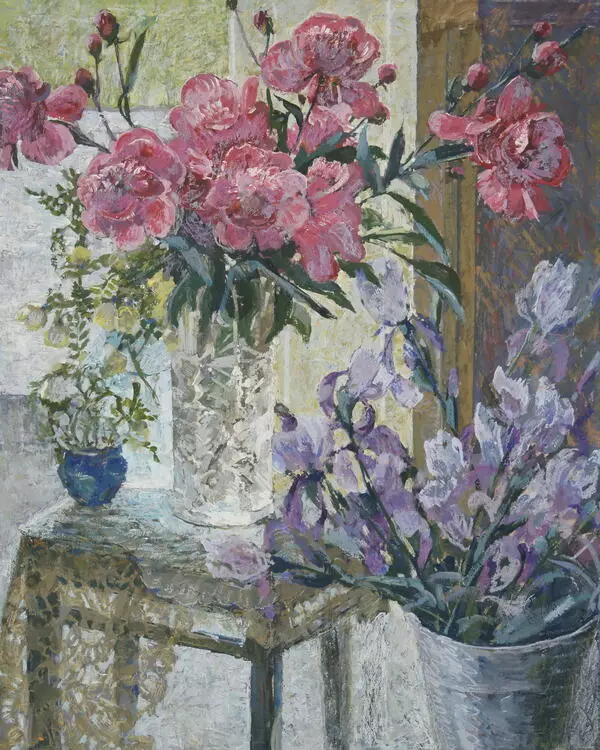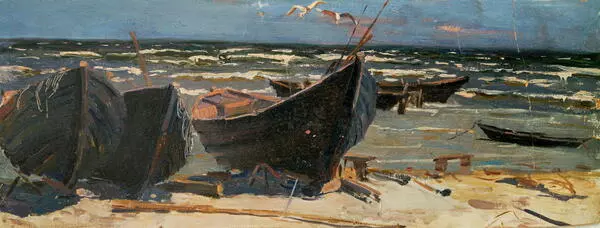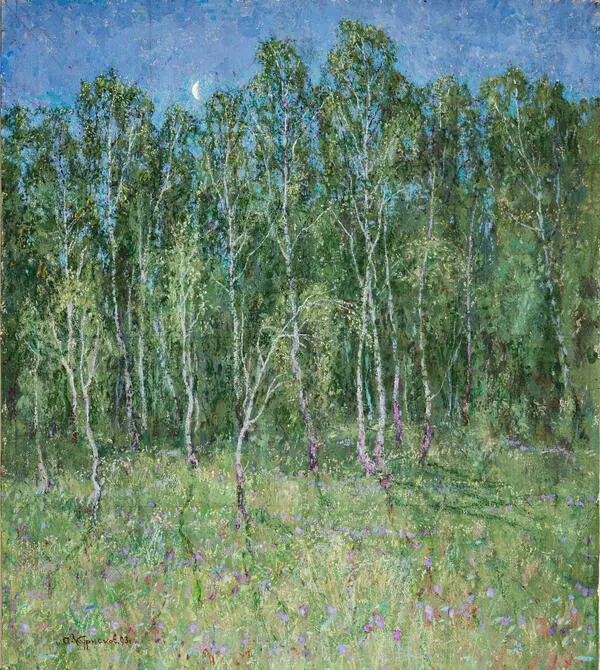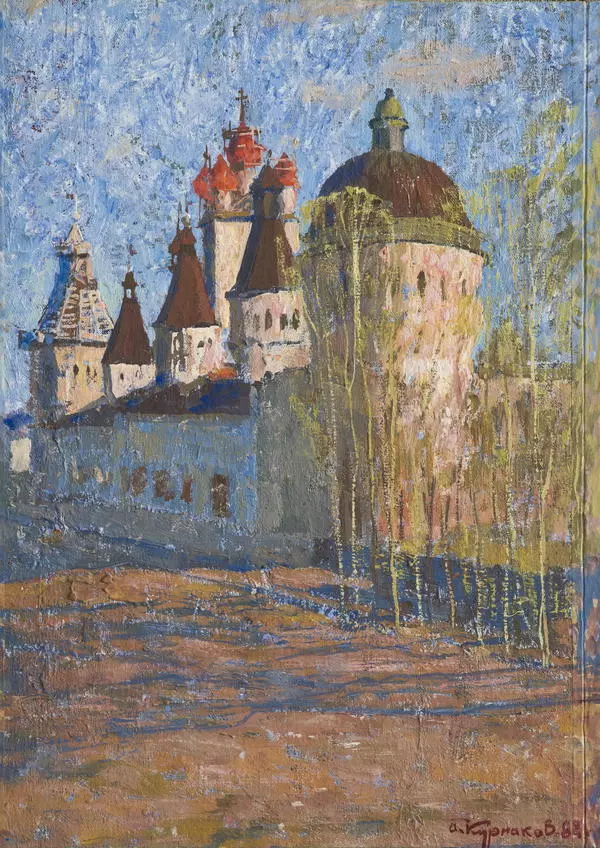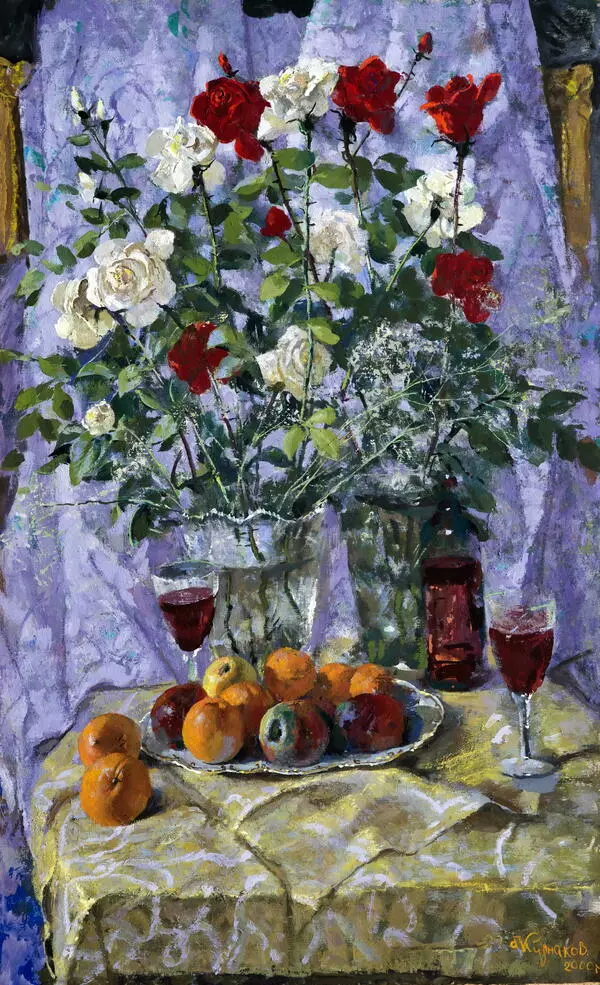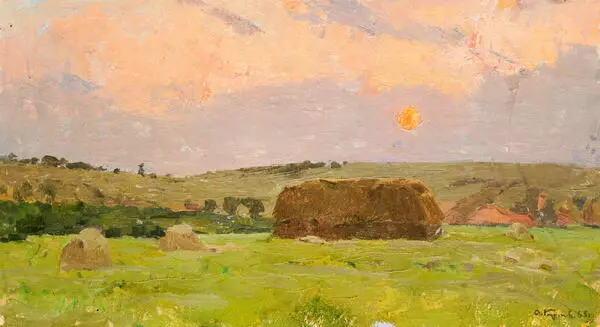Summer landscape with scenic elements. Countryside panorama with a river, meadow and birch forest. The high point from which the artist looks, standing on the hill, dictates the composition of the panoramic landscape. At the foot of the hill, on which the painter with his easel is located, stretches the river bank, overgrown with the already yellowed grass and ripe brown panicles of horse sorrel. A narrow but fast river is shown parallel to the lower edge of the painting. White ridges of ripples that run past with a melodic murmur tell us about its rapid flow. A light breeze sways the tall grass and panicles.
In the middle ground, on the opposite bank of the river, there is a flooded meadow covered with yellow-green grass. There are haystacks on it: on the left - two large and one smaller, on the right - three large and three small. Behind the stacks on the left side of the picture, there are groups of women walking in the meadow dressed in long black skirts, white blouses and red and white headscarves.
Slightly to the left of the composition’s center, two horses of white and brown color are depicted, harnessed to a cart carrying a large haystack, with a woman sitting at the top.
In the background are red clay hills and ravines with winding paths that lead to the edge of a sparse birch forest. The tree trunks are painted like thin white ribbons. On the left, a road divides a forest, behind which is probably a village. There is a strip of blue sky with rare pinkish clouds above the forest, which occupies a fourth of the picture’s space.
Evening is approaching, the setting sun casts shadows from haystacks and trees. The village women have finished their work. They slowly walk home, tired, but satisfied. Their working day started early in the morning in the dew, it was not for nothing that a Russian proverb said that ‘the dewier the grass, the easier it is to mow.’ Haymaking, which begins in the second half of the summer, in the old days was accompanied by many rituals and songs.
The warm color scheme of the picture creates a feeling of soft air, filled with floral smells of fragrant, freshly mown hay, the murmur of water and the chirping of grasshoppers. The artist depicts rural life very truthfully in his canvases - without embellishment and with great respect for people and their work. This topic is very close to Andrey Kurnakov. During his creative life, he painted more than a dozen canvases glorifying the rural worker.
In the middle ground, on the opposite bank of the river, there is a flooded meadow covered with yellow-green grass. There are haystacks on it: on the left - two large and one smaller, on the right - three large and three small. Behind the stacks on the left side of the picture, there are groups of women walking in the meadow dressed in long black skirts, white blouses and red and white headscarves.
Slightly to the left of the composition’s center, two horses of white and brown color are depicted, harnessed to a cart carrying a large haystack, with a woman sitting at the top.
In the background are red clay hills and ravines with winding paths that lead to the edge of a sparse birch forest. The tree trunks are painted like thin white ribbons. On the left, a road divides a forest, behind which is probably a village. There is a strip of blue sky with rare pinkish clouds above the forest, which occupies a fourth of the picture’s space.
Evening is approaching, the setting sun casts shadows from haystacks and trees. The village women have finished their work. They slowly walk home, tired, but satisfied. Their working day started early in the morning in the dew, it was not for nothing that a Russian proverb said that ‘the dewier the grass, the easier it is to mow.’ Haymaking, which begins in the second half of the summer, in the old days was accompanied by many rituals and songs.
The warm color scheme of the picture creates a feeling of soft air, filled with floral smells of fragrant, freshly mown hay, the murmur of water and the chirping of grasshoppers. The artist depicts rural life very truthfully in his canvases - without embellishment and with great respect for people and their work. This topic is very close to Andrey Kurnakov. During his creative life, he painted more than a dozen canvases glorifying the rural worker.
